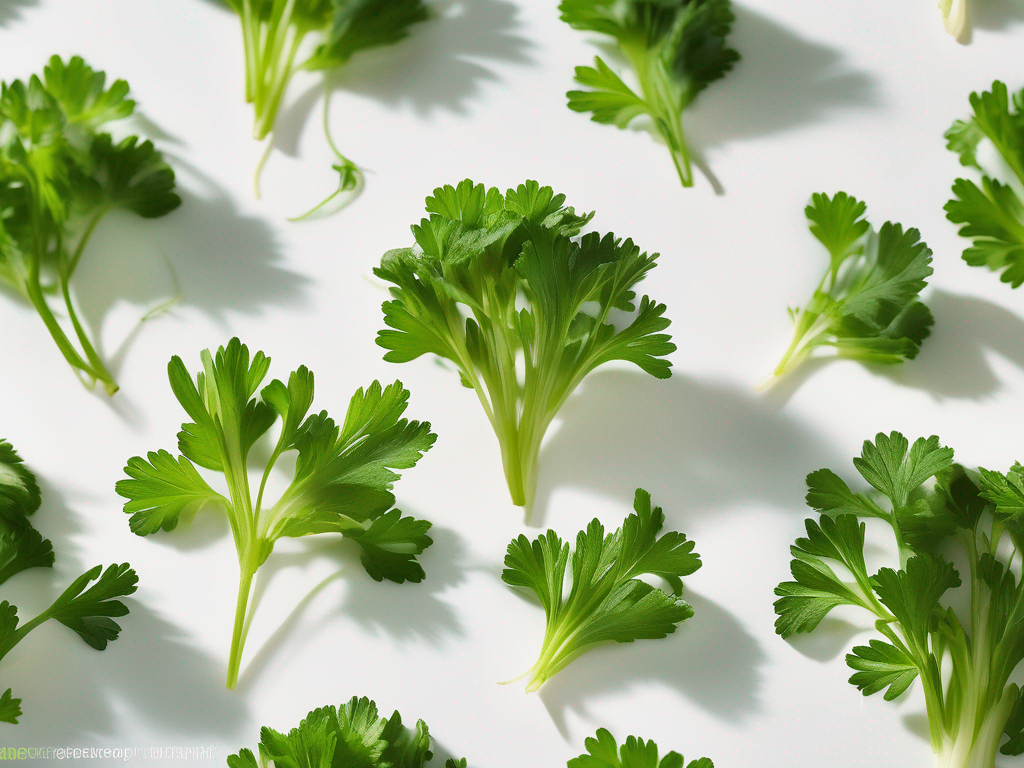
Signs That Parsley Has Gone Bad
Get Your Free Food Safety Cheat Sheet
30 most common foods with instant answers. Print it and stick it on your fridge—completely free!
Signs That Parsley Has Gone Bad
Parsley is a versatile herb that adds flavor and freshness to a variety of dishes, from salads to soups to sauces. However, like all fresh produce, parsley can spoil if not stored properly. In this blog post, we will discuss the signs that parsley has gone bad and provide tips on how to properly store it to maximize its freshness and flavor. (Parsley)
Why Properly Storing Parsley is Important
Before we delve into the signs of spoilage, let's first understand why it is crucial to store parsley correctly. Proper storage not only helps extend the shelf life of parsley but also ensures that it remains safe to consume. Here are a few reasons why proper storage is essential:
- Maintains Freshness: Storing parsley correctly helps retain its vibrant color and flavor.
- Prevents Spoilage: Improper storage can lead to the growth of mold and bacteria on parsley, making it unsafe to eat.
- Preserves Nutritional Value: Proper storage helps preserve the nutritional content of parsley, ensuring you get the maximum benefit from this herb.
Now that we understand the importance of proper storage, let's explore the signs that parsley has gone bad.
Signs of Spoiled Parsley
1. Discoloration
- Yellowing: If you notice that the leaves of your parsley are turning yellow or brown, it is a sign that the herb is past its prime.
- Dark Spots: Dark spots or patches on the leaves indicate that the parsley is starting to spoil.
2. Slimy Texture
- Sliminess: When parsley becomes slimy to the touch, it is a clear indicator that it has gone bad. The slimy texture is a result of bacterial growth on the herb.
3. Foul Odor
- Moldy or Rotten Smell: Spoiled parsley will emit a foul, moldy, or rotten smell. If your parsley smells off, it is best to discard it.
4. Wilting
- Limp or Wilted Leaves: Fresh parsley should have crisp, firm leaves. If the leaves appear limp or wilted, it is a sign that the herb is no longer fresh.
5. Mold Growth
- Visible Mold: Mold growth on parsley is a clear indication that it has spoiled. Do not attempt to salvage parsley with visible mold; discard it immediately.
Proper Storage Tips for Parsley
To ensure that your parsley stays fresh for as long as possible, follow these storage tips:
-
Refrigerate: Store fresh parsley in the refrigerator. Place the herb in a resealable plastic bag or wrap it in a damp paper towel before placing it in the vegetable crisper.
-
Trim the Stems: Before storing parsley, trim the ends of the stems and place the herb in a glass of water, similar to fresh flowers. Change the water every few days to keep the parsley fresh.
-
Freezing Parsley: If you have an abundance of parsley, consider freezing it for later use. Wash and chop the parsley, then freeze it in an airtight container or freezer bag. Frozen parsley can be added directly to dishes without thawing.
-
Dry Parsley: Another option for preserving parsley is to dry it. Bundle the parsley stems together and hang them upside down in a dry, well-ventilated area. Once dry, remove the leaves from the stems and store them in an airtight container.
Conclusion
In conclusion, parsley is a flavorful herb that can enhance a wide range of dishes. By understanding the signs of spoilage and following proper storage techniques, you can ensure that your parsley stays fresh and safe to eat. Remember to check for discoloration, sliminess, foul odors, wilting, and mold growth as indicators that parsley has gone bad. By storing parsley in the refrigerator, trimming the stems, freezing, or drying it, you can extend the shelf life of this versatile herb and enjoy its fresh taste in your culinary creations. (Parsley)
Authoritative Food Safety References
These agencies and university labs inform every tip and health precaution we publish.
USDA FoodKeeper – Cold Storage Guidelines
Official refrigerator, freezer, and pantry timelines maintained by the U.S. Department of Agriculture.
Visit USDA FoodKeeperFDA Produce Safety Rule & Grower Guidance
Field-to-fridge handling practices that prevent contamination of fruits, vegetables, and leafy greens.
Visit FDA Produce SafetyCDC Foodborne Illness Prevention Hub
Surveillance-backed guidance on pathogens, symptoms, and steps to reduce foodborne illness risk.
Visit CDC Food SafetyUC Davis Postharvest Technology Center
University research detailing optimal storage atmospheres for produce after harvest.
Visit UC Davis PostharvestPenn State Extension – Home Food Preservation & Safety
Peer-reviewed extension bulletins on safe canning, chilling, and reheating practices.
Visit Penn State ExtensionGet Your Free Food Safety Cheat Sheet
30 most common foods with instant answers. Print it and stick it on your fridge—completely free! Want more? Upgrade to the complete guide with 70+ foods.
Scan your food directly and get instant safety info using our AI-powered camera feature.